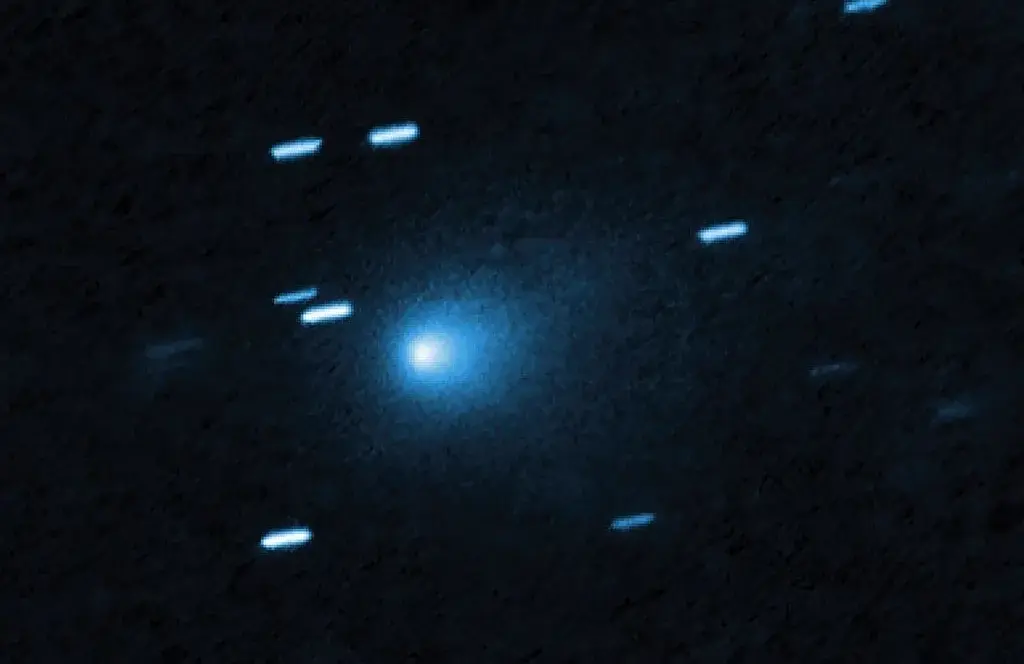NASA to release new images of interstellar comet 3I/Atlas captured by spacecraft and powerful telescopes
-
 Image via @nasa.gov
Image via @nasa.govNASA has announced that it will soon release new images of the interstellar comet 3I/Atlas. These pictures were captured using both spacecraft equipment and powerful space telescopes.
The update has created excitement among scientists and skywatchers because 3I/Atlas is one of the rare objects that entered our solar system from far beyond it.
Interstellar comets are extremely uncommon. Most comets we see are from our own solar system, but 3I/Atlas came from another star system. Because of this, every photo and piece of data helps scientists learn more about how objects outside our solar system form.
NASA says the upcoming images will provide a much clearer view of the comet’s shape, brightness and unusual features that researchers have been discussing in recent months.
Why 3I/Atlas is important and why NASA wants to share these images
3I/Atlas has been in the news because it behaves differently from normal comets. Scientists have noticed unusual changes in its brightness, direction and dust patterns.
One of the unusual features includes an “anti-tail,” which resembles a comet tail pointing toward the Sun instead of away from it.
NASA wants to share the new images so that researchers worldwide can study the comet together. When multiple teams examine the same object, they can compare their results and gain a better understanding of it.
The more scientists learn about 3I/Atlas, the more we understand about the larger galaxy.
Interstellar objects like this are rare opportunities. Once they leave our solar system, they may never come back, so NASA is taking as many photos as possible before 3I/Atlas moves out of range.
The images will also be helpful for the public. Many people enjoy following space events, and clear photos make it easier to see what scientists are studying.
What the new images might show and how they will help researchers
NASA has not yet revealed the exact details, but the new photos are expected to show:
- the comet’s surface more clearly
- its dust and gas tail
- the unusual anti-tail formation
- its movement across space
- how sunlight interacts with its materials
These images will be obtained from a combination of tools, including spacecraft sensors and high-quality telescopes in space. When these two types of tools work together, NASA can capture different angles and details that would be hard to see from Earth alone.
The photos may help answer questions such as:
- What is the comet made of?
- Why does it behave differently from normal comets?
- How did it form in another star system?
- What can it tell us about planets and stars far away?
Scientists hope the images will give clearer clues about the comet’s structure and history. Even small details can help explain why 3I/Atlas looks and moves the way it does.
What happens next as NASA prepares to release the images
NASA will publish the images on its official website and through its science channels. Once released, researchers, students, and the public can view them closely. Many scientists are already prepared to study the images as soon as they come out.
NASA will continue observing 3I/Atlas until it becomes too distant for clear photos. For now, the comet remains within range of several telescopes, providing scientists with a limited but important window to study it.
With these new images, NASA aims to provide everyone with a closer look at one of the rarest visitors our solar system has ever seen.
- YouTube removes AI-generated 3I/ATLAS videos impersonating Harvard Professor Avi Loeb
- New analysis presents unusual features documented in the 3I/ATLAS trajectory and activity
- Periodic light variability in interstellar object 3I/ATLAS linked to jet activity
- What we know so far about 3I/ATLAS: Everything understood to date